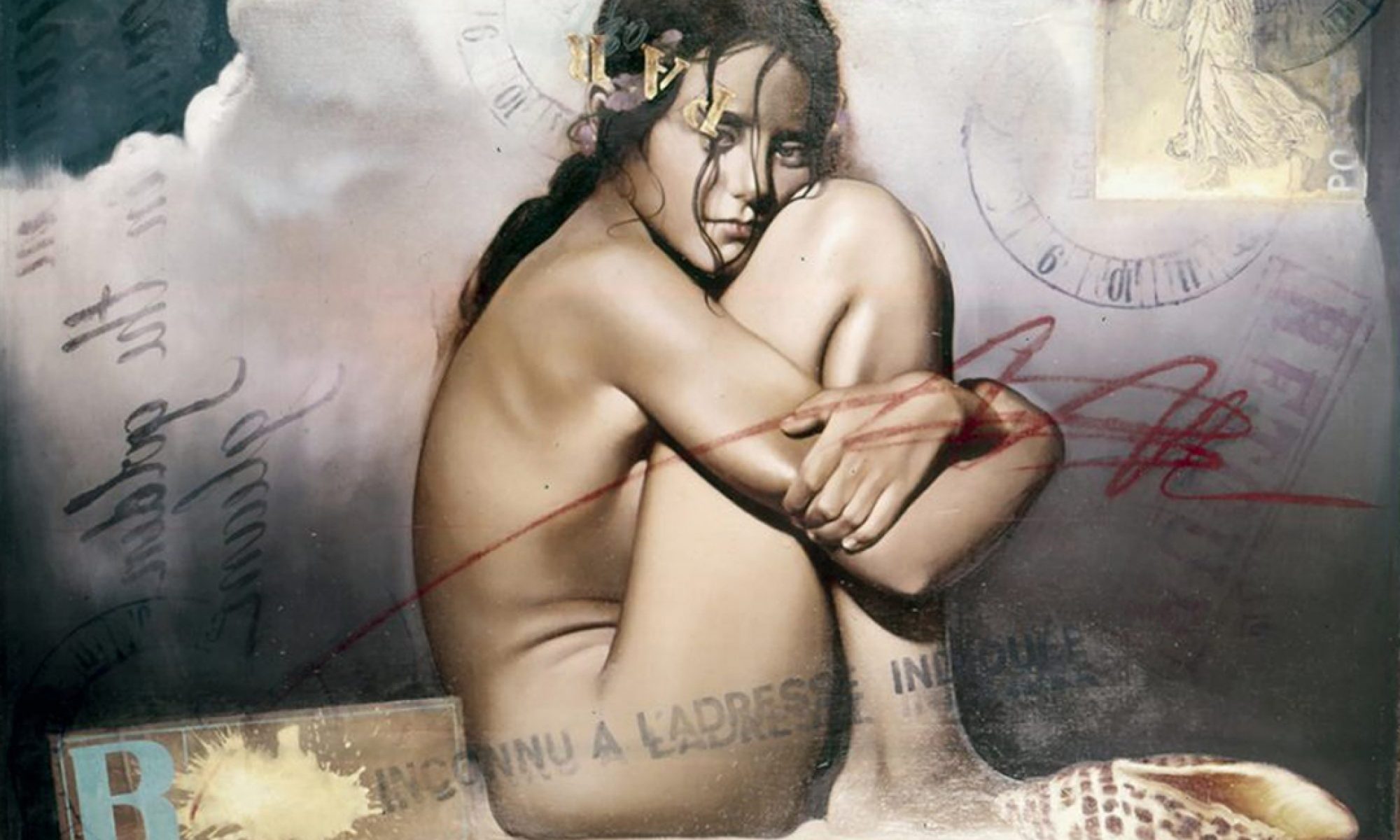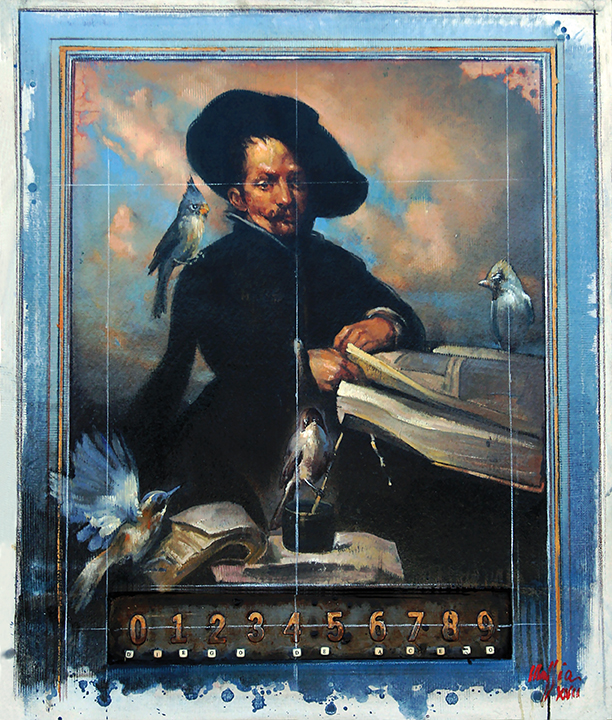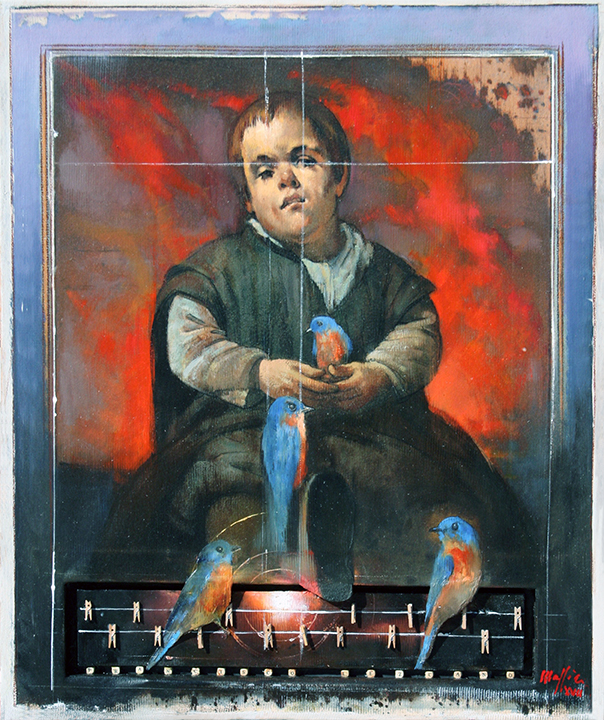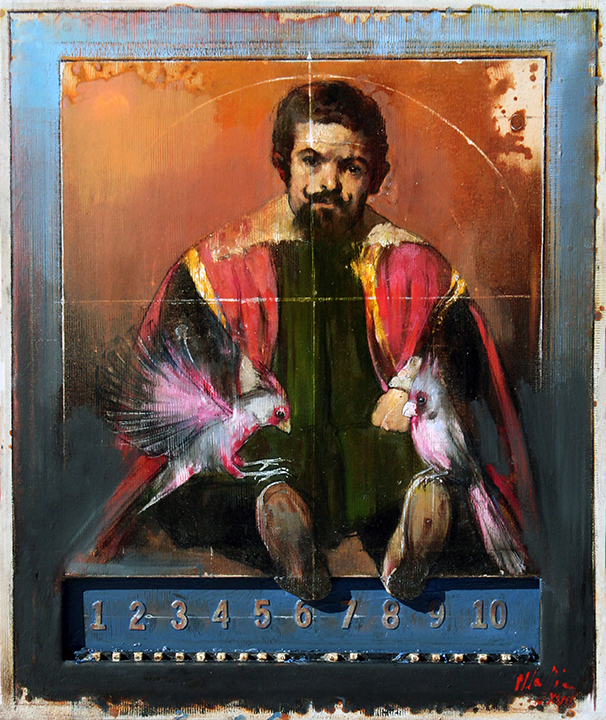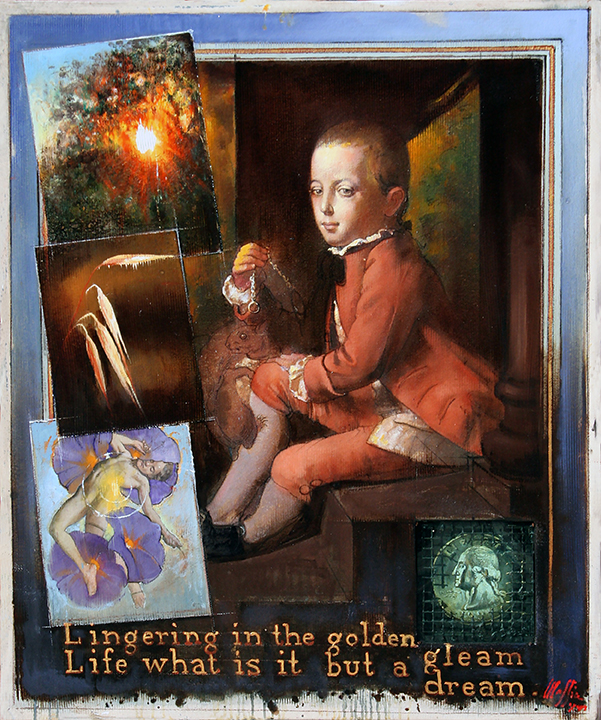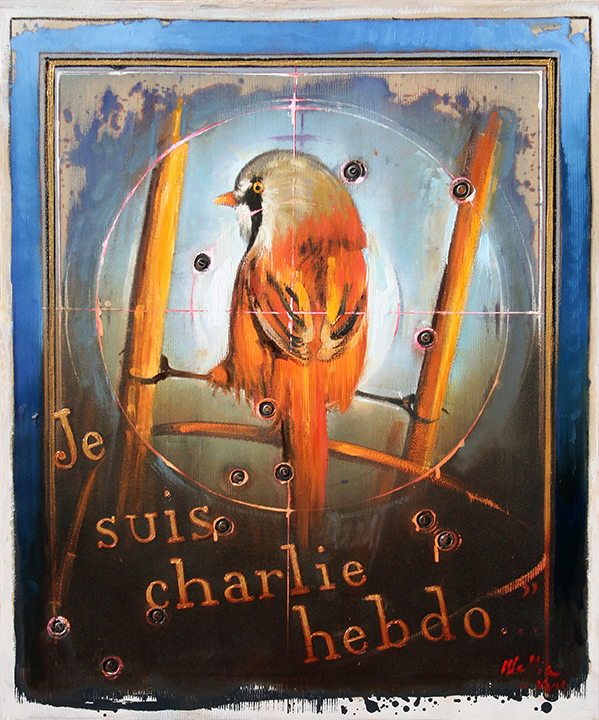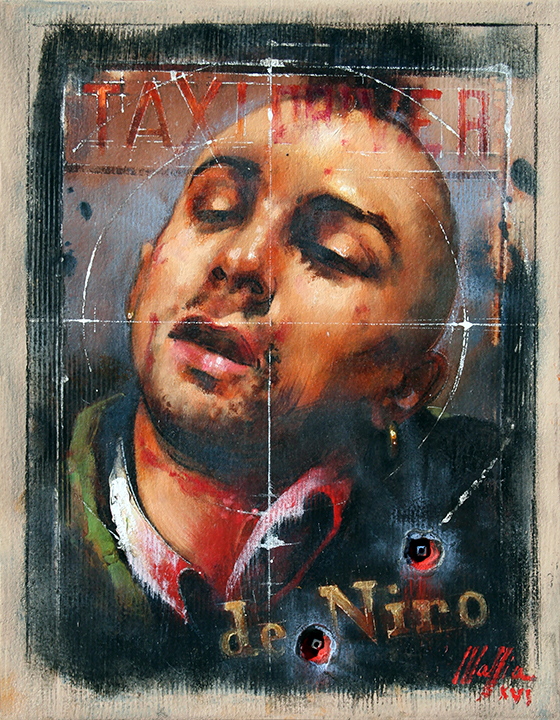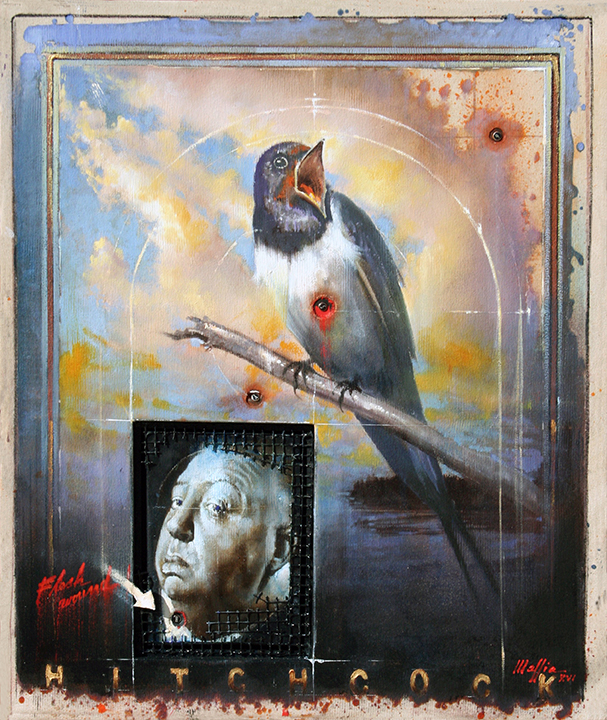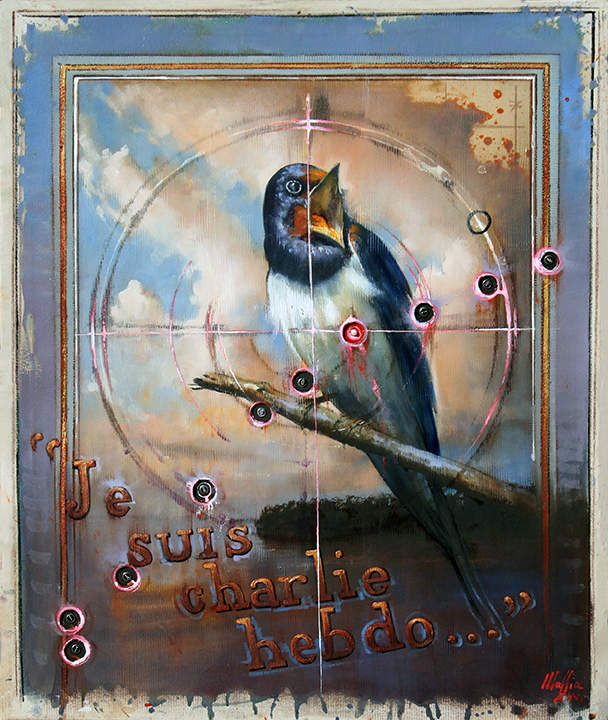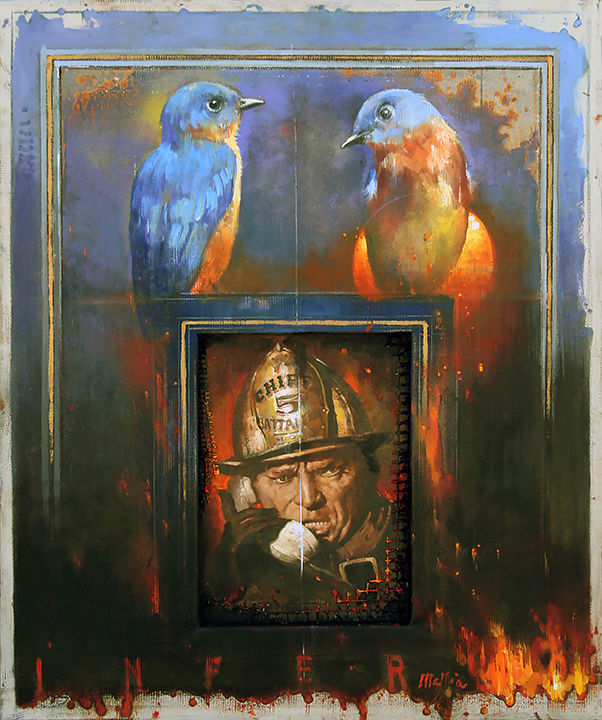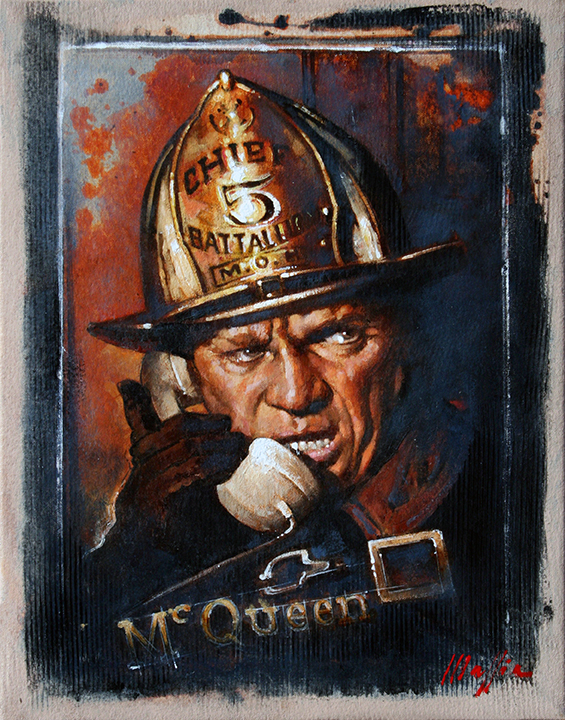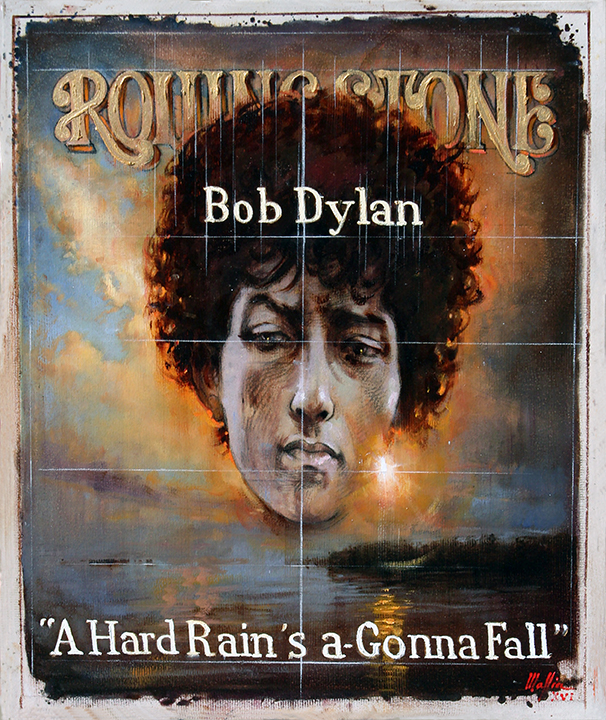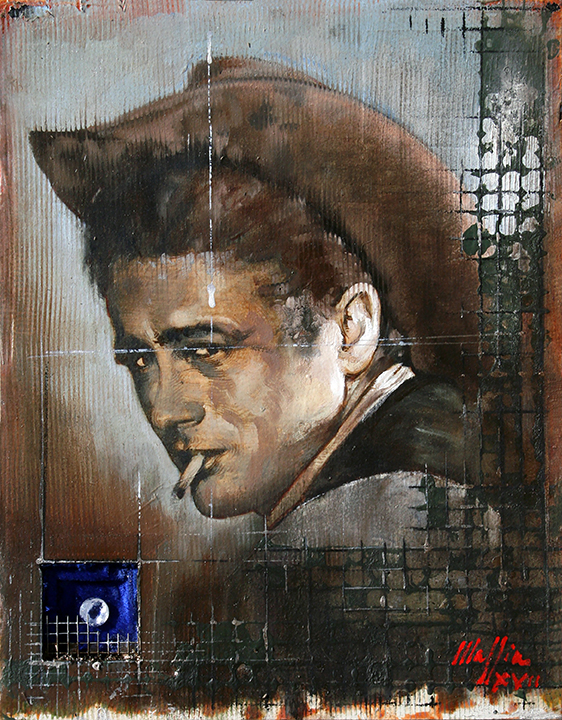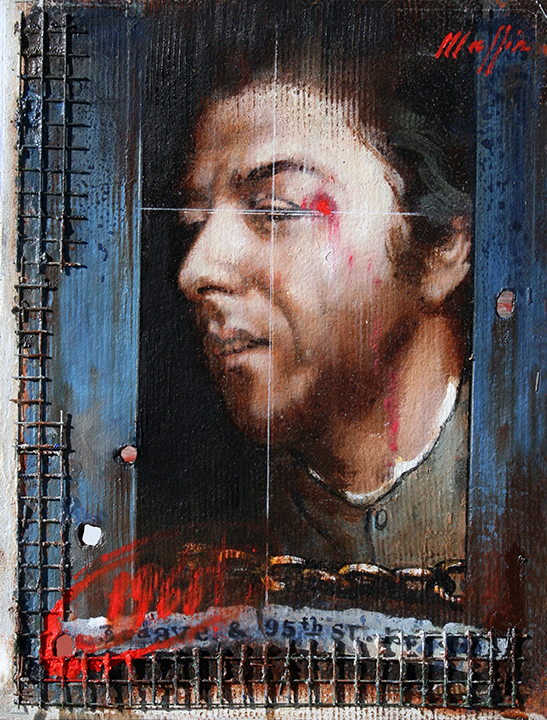(Published in the July/August 2017 issue of “Artscope” Magazine)
“Will to Survive – Daniel Maffia in Wellfleet”
“Art for Survival,” a portrait exhibition of paintings by Daniel Maffia, opens on August 19th at Harmon Gallery in Wellfleet. The artist makes narratives that rely on appropriation or remix as a method for sourcing content. He includes recognizable images from pop culture and film noir, as well as familiar art historical references reframed or re-contextualized to define the character of the present. All of Maffia’s paintings at Harmon Gallery, which were painted over the last two years, function as social commentary. They are important as markers for reflection.
A resident of Hingham, MA and Southern France, Maffia was born and raised in France; he then worked for years in New York as a very competent illustrative painter. He became known for having created many cover portraits for “Time” and “Rolling Stone” magazines and he has deftly created some very iconic imprints in our visual memory banks.
Among artworks that will be on view is one painting that is a redux of his “Time” Magazine portrait cover (c1980) of John Lennon captioned “When the Music Died.” The work was commissioned to report the ex-Beatle’s assassination. Maffia’s show also includes paintings based on still images or screen grabs from movies like “Taxi Driver” and “Towering Inferno” as well as paintings that mimic (extremely well) masterpieces by Velasquez: “Don Diego Acedo” (c.1644) and “Sebastián de Morra” (c 1644).
Velazquez was a portraitist of the Spanish Royal Court during the era of the Spanish Inquisition, so in making the reference, Mafia suggests equivalent power and corruption as pivot points informing his perspectives of social commentary and cultural overview. Velazquez is a foil for Maffia to speak about a global one percent ruling class and the existent culture of terrorism driven by religious extremism that was then and is now typified by unbridled intolerance, violence and purge.
When looking at Maffia’s Velazquez images, audiences will find the compassionate and respectful address of dwarfs as subjects. This is an indication that even in 17th century Spain moratoriums on cruelty did occur. Velasquez painted dwarfs as individuals with dignity and respect and that fulcrum in terms of past and present can be interpreted as crucially important today.
A concern of the artist, aside from the violence of the world in which we live, seems to be the precarious randomness of attack. His paintings that include the words “Je suis charlie hebdo” are done in the retro style of old movie posters. These are of course elegy paintings speaking of disembodied identity that pays bittersweet homage on canvas to a now voiceless victim of terrorism. Maffia’s film noir side comes through in these paintings where strafes of bullet holes puncture and punctuate his compositions, which emphasizes the potentially random immediacy of violence as life altering.
Steve McQueen’s firefighter character that Maffia has lifted from a stock image of “The Towering Inferno,” and the artist’s other double take featuring young Robert De Niro’s character in two “Taxi Driver” portraits, explore qualities of heroism, extremism and martyrdom.
Throughout the show, Maffia is reflecting on violence as the driving conceptual direction of his content and he explores this topic across idioms. The artist’s works sometimes put audiences in the position of bystander, and other times, the nature of a close-up creates a slightly uncomfortable mirroring effect for viewers.
Maffia’s paintings are stand-ins enmeshed in extreme moments, and ours is a bird’s eye view. The presence of birds painted as if landing in or flying through Maffia’s various subject frames indicates warning, and that the artist would like to see a peaceful resolve to emergency in order to heal or evolve amid what are often fleeting, precarious even dangerous moments in time.
Written by Suzanne Volmer.
